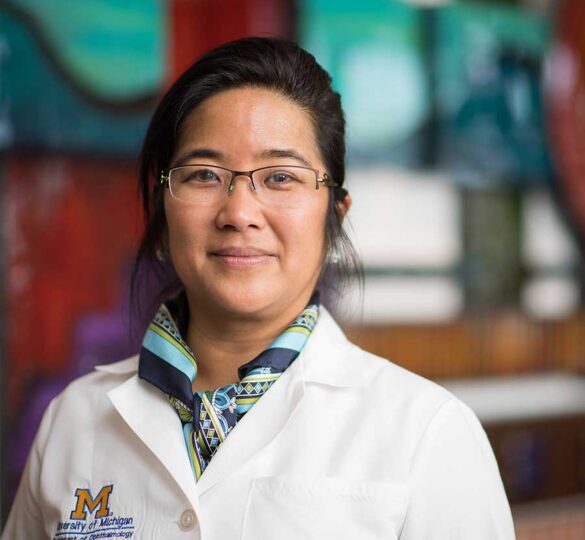Researcher Spotlight: Sayoko E. Moroi, MD, PhD
Sayoko “Sy” Moroi is the Jerome Jacobson Professor of Ophthalmology and Visual Sciences at University of Michigan, Kellogg Eye Center.

In 2005, Glaucoma Research Foundation awarded Dr. Moroi a $32,000 pilot-project grant for an investigation titled, “The Role of Beta2-Adrenergic Receptor Genetic Polymorphisms on Variations in Aqueous Humor Flow and Drug Response in Humans.” In January 2007, the Archives of Ophthalmology published a paper based on her research findings.
At the 2018 American Academy of Ophthalmology meeting in Chicago, Dr. Moroi delivered the 39th Robert N. Shaffer Lecture, named in honor of the founder of Glaucoma Research Foundation (GRF). The title of her talk was “At the Technological Confluence of Glaucoma Clinical Care and Research.”
Dr. Moroi is interested in looking at glaucoma research and treatment through a social justice lens. “Despite all our success, we still have a sizeable number of patients who go blind,” she says. “Patients still have to come to us. Our current model of healthcare delivery is not working for low-income people without resources. Somehow we have to be more proactive about healthcare disparities.”
What is the primary focus of your work/laboratory?
I respond to my patients’ questions and challenges, so I study glaucoma outcomes, genotype-phenotype relationships, and now biomarkers for drug response and for the angle-based microinvasive glaucoma surgeries.
What is one highlight accomplishment of the past year?
I was most honored to be the second woman in 39 years to deliver the Robert N. Shaffer Lecture at the 2018 American Academy of Ophthalmology. I honored my patients, parents, family, and mentors, all of whom have supported my curiosity to make progress to do my best for patients with glaucoma.
How has Glaucoma Research Funding advanced your work and career?
Private foundations have a pivotal (or “key”) role to jumpstart research careers. My research program benefited as a recipient of funding from private foundations. With the GRF funds, I determined that the frequency of genetic variants, called single nucleotide polymorphisms or “SNPs” in the beta-blocker drug target, beta2 adrenergic receptor, was similar between glaucoma cases and controls. We reproduced the observation that there was a population difference in the frequency between African Americans and Caucasians. Our next steps are to examine the role of SNPs among glaucoma drug targets and intraocular pressure (IOP) genes on drug response and IOP fluctuation.
What are your priorities for the coming year?
I will focus on characterizing the aqueous humor dynamic factors that predict drug response. This project is a continuing NIH funded project with colleagues Dr. Toris at Case Western Reserve University, Dr. Sit at Mayo Clinic, and Dr. Gulati at University of Nebraska Medical Center. A second project with University of Michigan engineer Dr. Argento and funded by NSF will focus on the biomechanical properties of the scleral tissue around the limbus on eye pressure regulation.
When you’re not in the lab, how do you spend your time?
In the clinic, I am trying to prevent glaucoma-related blindness. Outside of the clinic and lab, I enjoy spending time with my four sons, husband, and wonder dog.
What motivates and inspires you?
My parents planted the seeds of science and curiosity. I try my best to help patients and their families deal with challenges of vision impairment and blindness from glaucoma. My patients motivate me to discover new clues that cause glaucoma or protect from glaucoma, and to apply innovations that can improve vision, so that they can look forward to seeing lifelong experiences.
Posted on January 21, 2019